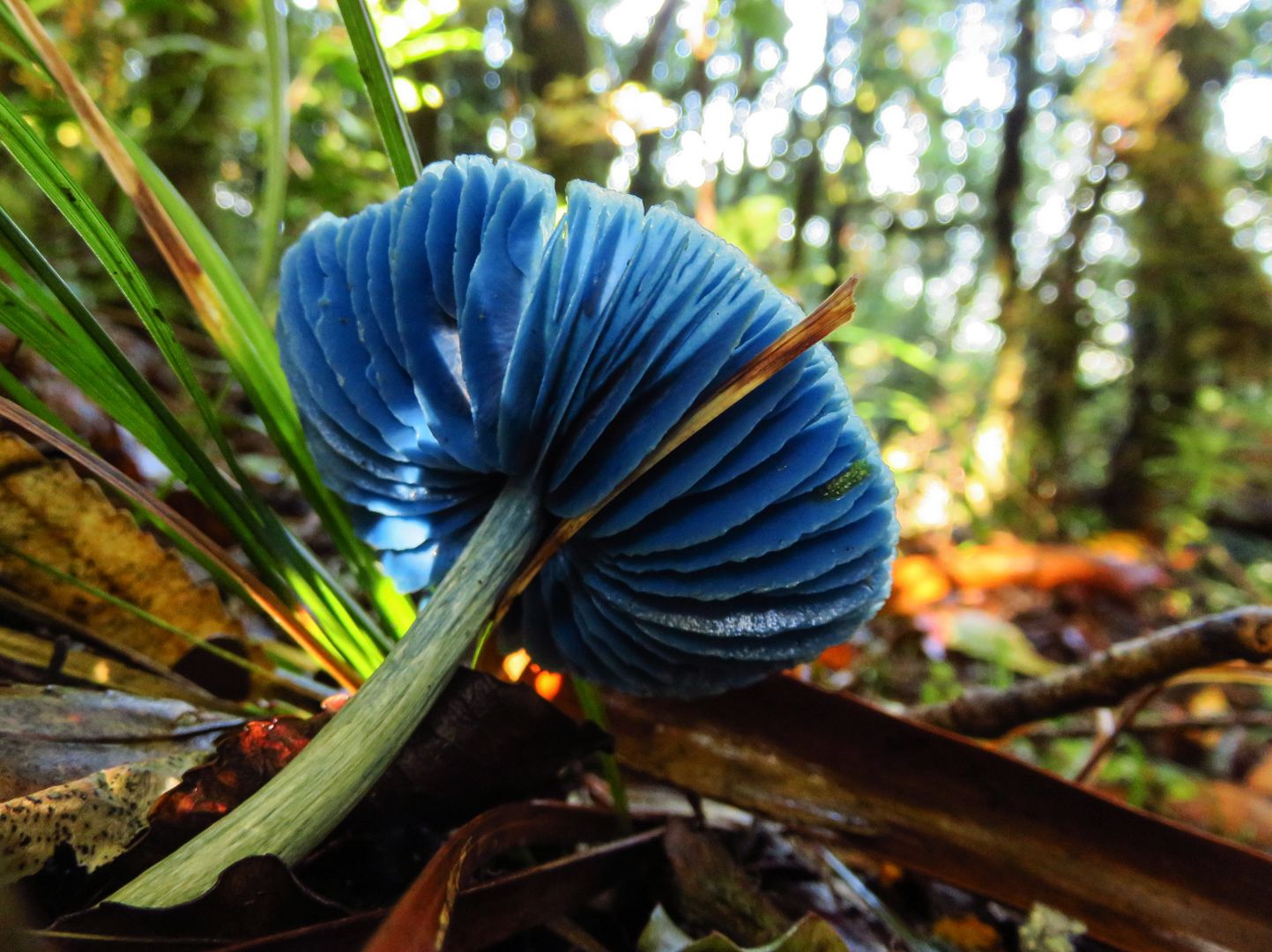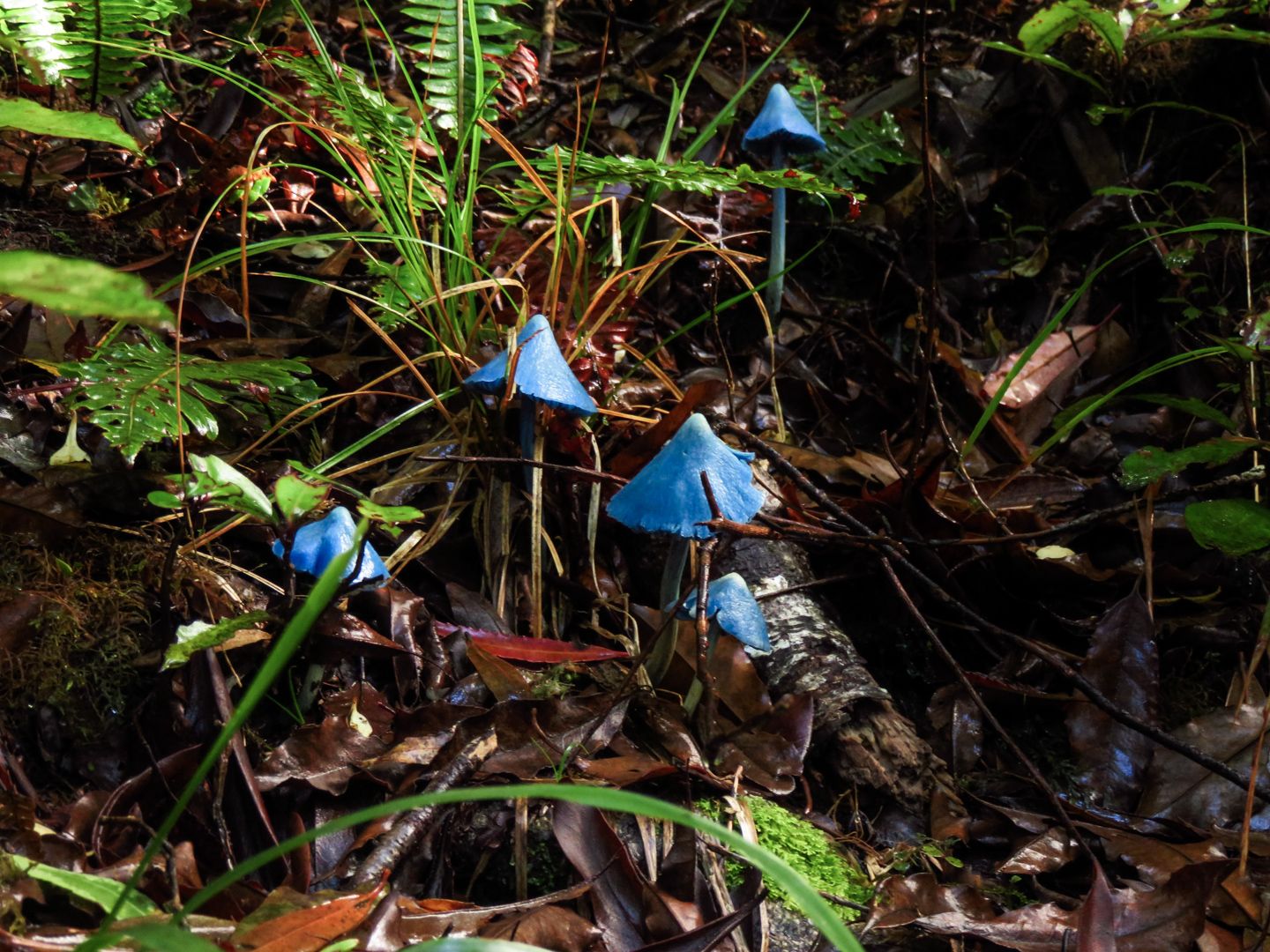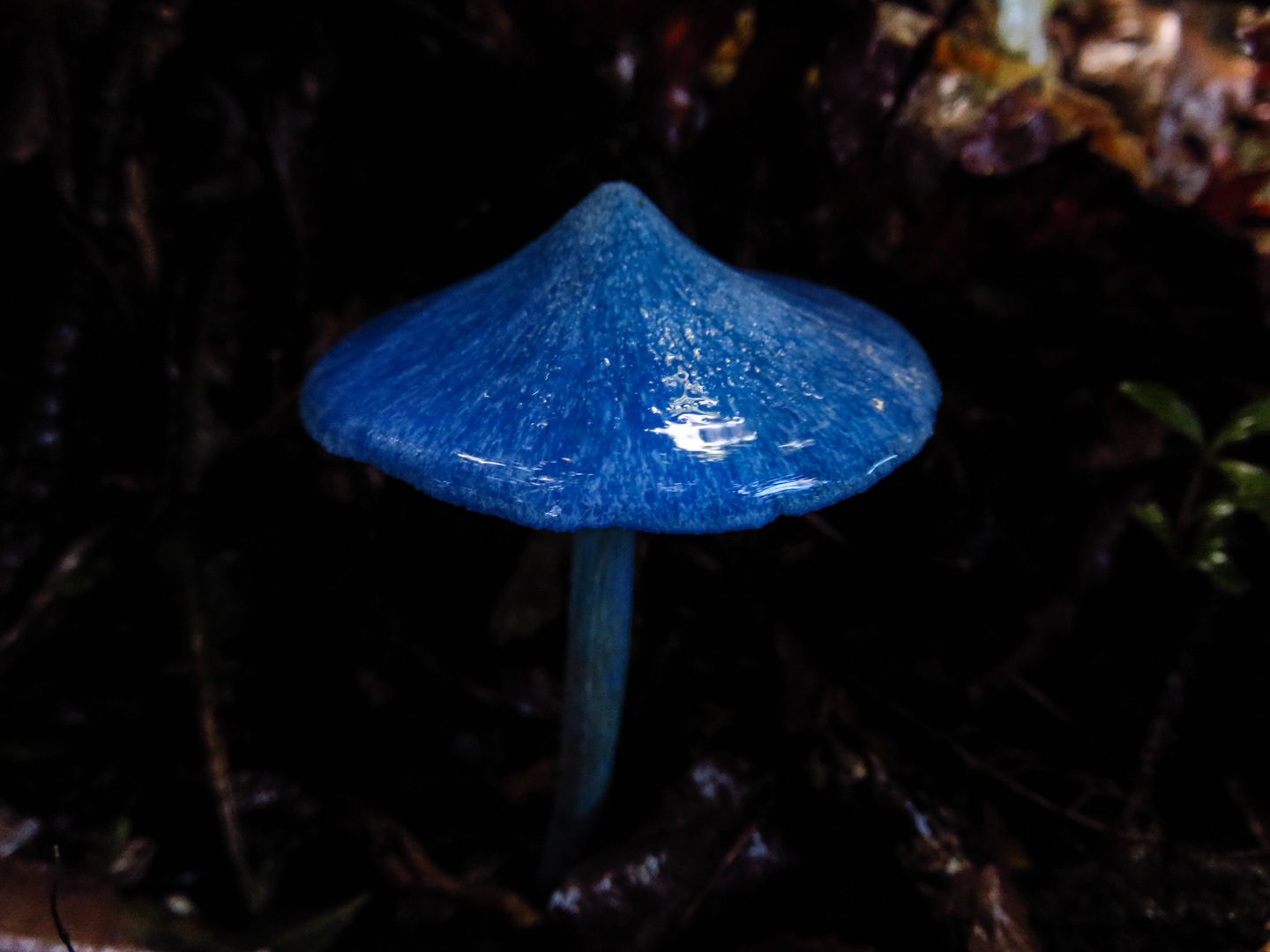FOCAL SPECIES:
Entoloma hochstetteriREVIEWER

Hannah Findlay
Conservationist
Hannah is an expedition leader and currently works in the Czech Republic for Alka Wildlife. Hannah develops conservation research projects, plans conservation measures for endangered species and manages Alka Wildlife’s social media content.
AUTHOR

Tom Ovenden
PhD Student
Focal Species: Entoloma hochstetteri
Entoloma are a genus of fungi which are commonly referred to as the “pinkgills”, though this description would initially be misleading for obvious reasons in the case of the striking blue New Zealand species, Entoloma hochstetteri. The name hochstetteri is in reference to a German-Austrian geologist and naturalist called Ferdinand von Hochstetter after whom it was named. You might see this name crop up elsewhere, especially in other species names where it is almost certainly in reference to the same person; the carnivorous snail called Powelliphanta hochstetteri (nice and easy to pronounce!) is another New Zealand example.
While it doesn’t have a common English name, the Māori of New Zealand called this species “werewere-kokako” because of its similarity in colour to the beautiful endemic (meaning it is found here and nowhere else) bird species, the kōkako. Its striking appearance has meant it has even appeared on both the currency and stamps of New Zealand; here’s hoping the reference to stamps does not dissuade you from reading on…
All mushrooms are types of fungi, but not all fungi are mushrooms! Generally speaking we can think of mushrooms as those conspicuous above ground parts of a fungus that produces spores, acting in a very similar way to a flower of a plant; the mushroom is the reproductive organ of many fungi. When trying to identify a species of fungi, many mycologists, the people that study fungi, will take a spore print. This essentially involves removing the cap and leaving it on some paper long enough for the spores contained within the gills to fall down onto the paper. These spore prints provide clues as to the identity of the species, either under a microscope through their shape and size, or simply through their visible colour, which in the case of the blue E. hochstetteri is where the pink comes in. Give it a go next time you see a fresh mushroom; it’s as low tech as it gets, and you will be amazed at how many spores fall overnight.



I first came across this amazing blue fungus, which has a distinct Avatar feel about them, in a place called Okarito on the South Island of New Zealand (this was a very good day) and then later again in great abundance on the North Island (making this also, a very good day). E. hochstetteri is a type of fungus called a saprobe, which basically means it lives on and gets all its food from already dead and decaying organic material. Lots of fungi are saprotrophic, which is fortunate as it would be quite hard to overstate how important this group of organisms are in the functioning of forest ecosystems. Without them, we would be way more than knee deep in the discarded limbs, leaves and bodies of all the other forest organisms. To add a bit of context, up to 5 tonnes of this ‘forest debris’ can be generated by every hectare of a temperate forest every year, that’s the weight of an adult Asian elephant. This figure can reach 60 tonnes a hectare in tropical forests. A very large proportion (up to 90%) of total nutrient cycling in many terrestrial systems are performed by these fungi (Spooner and Roberts, 2005) making them literally an indispensable part of the ecosystem.
E. hochstetteri has occasionally been found in India but is commonly found in amongst the mosses and leaflitter of the forest floor in the broadleaf southern-beech (Northofagus) and coniferous Podocarpus forests of New Zealand. Its level of toxicity is unknown so I wouldn’t suggest adding it to a back-country camping salad, especially as many Entoloma species are known to be poisonous (Philips, 2006). Despite its dubious edibility, it has to be one of the most amazing fungi I’ve ever come across and a personal favourite purely because of its amazing colour. So, if you ever find yourself wandering around the bush of New Zealand, especially the west coast, keep an eye out, though missing it is surely harder than spotting it.
REFERENCES
Philips, R. (2006) Mushrooms – A comprehensive guide with over 1, 250 detailed photographs of mushrooms and other fungi. Seconde Ed. Macmillan.
Spooner, B. and Roberts, P. (2005) Agents of Decay in Fungi. Collins New Naturalist.

